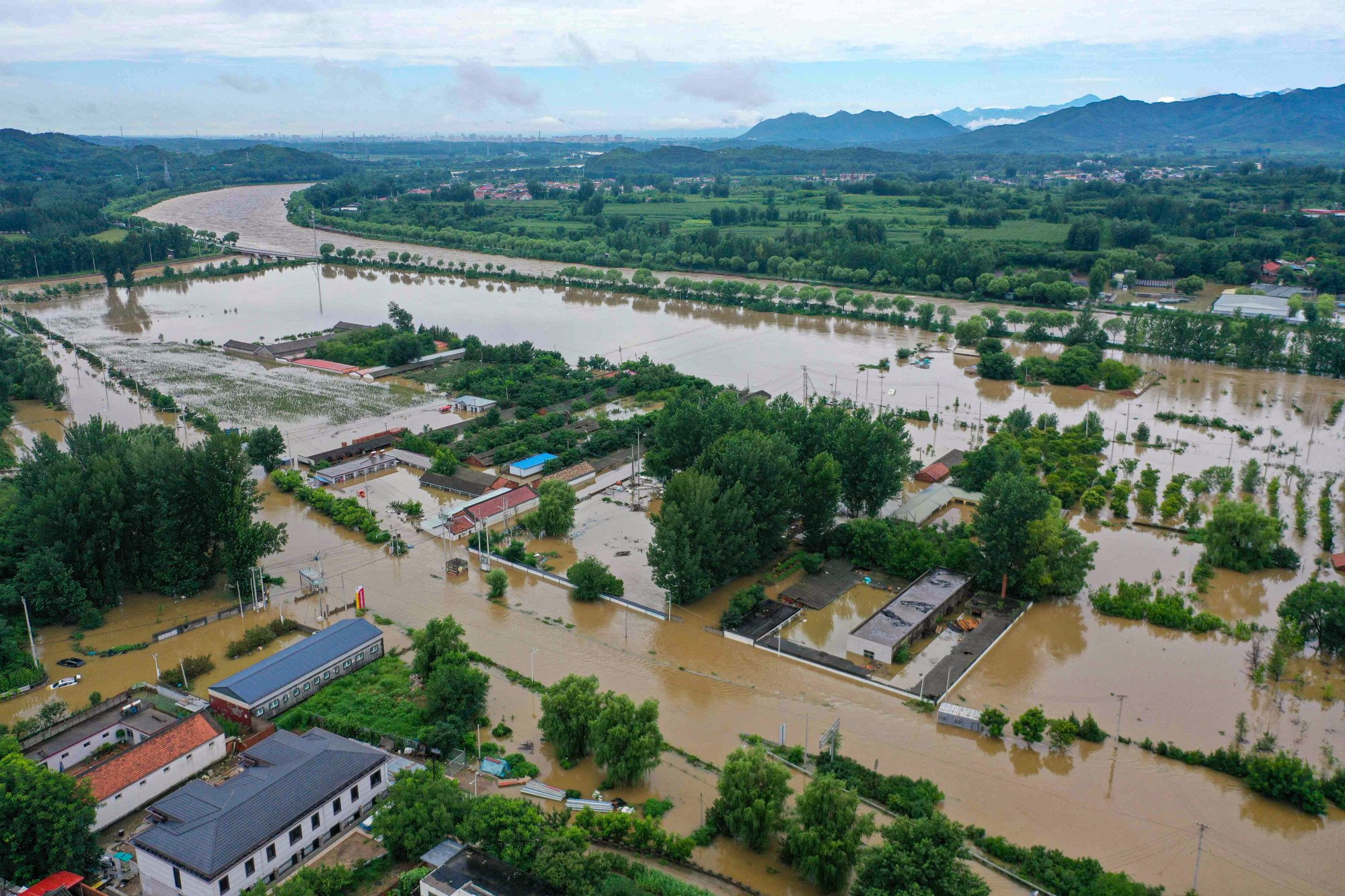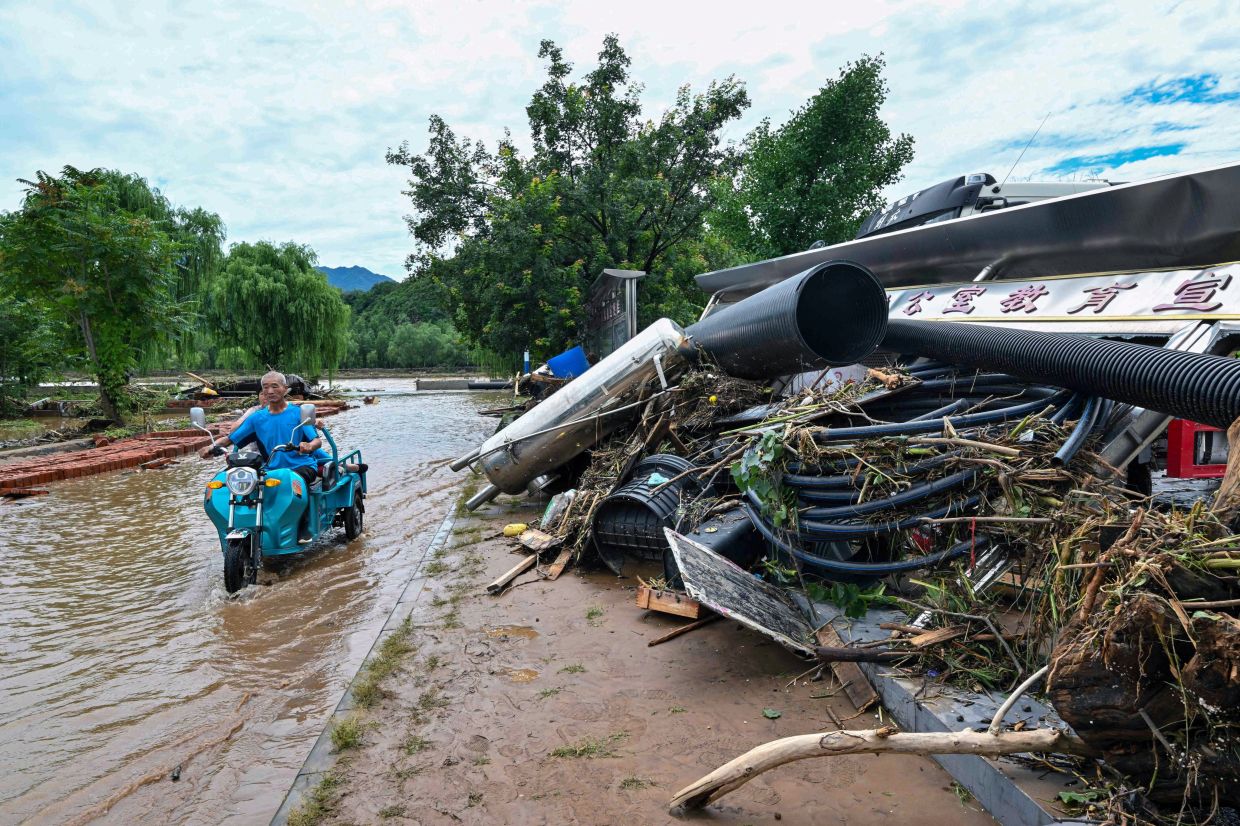China has allocated millions in emergency funds to regions devastated by heavy downpours and floods that claimed at least 40 lives in Beijing and its neighbouring provinces.
A total of 550 million yuan (US$76.7 million) has been allocated by the central government to flood-hit regions for disaster relief, with 200 million yuan directed to Beijing’s response to the floods.
The torrential rains led to 30 deaths in Beijing as of Monday, according to state media reports on Tuesday. Chinese leaders called for all-out efforts in disaster relief after “heavy casualties” in the city and other parts of the country.
July and August are the rainy season in China, and the wet weather has hit Beijing, the neighbouring province of Hebei, the northeastern province of Liaoning and the eastern coastal province of Shandong, causing “heavy casualties and property losses”, state news agency Xinhua reported on Monday night.
Videos of flooding and landslides, as well as rescue efforts, have been circulating on social media. Many of the online posts show houses submerged and destroyed, with debris embedded in the mud-choked ground or drifting in floodwaters.
One online commenter, calling herself Nanxi, described her evacuation on Sunday from Miyun – the mountainous district northeast of Beijing that was worst affected – as “not an escape room game, but a real-life ordeal”.
“In less than half an hour, the first floor of the villa we were staying in was completely submerged. Floodwaters from the mountains rose to shoulder height,” she wrote.
More than 37,000 people from 149 villages were forced to relocate from Miyun, where heavy rain since Saturday has caused flash flooding and landslides, according to local media reports.

In its Monday report, Xinhua cited instructions by President Xi Jinping for all possible steps to be taken to prevent flooding, for effective deployment of disaster relief supplies to ensure immediate responses and for quick handling of any sudden emergencies.
“The heavy rainfall and flooding in Miyun have caused heavy casualties. It is imperative to make all-out efforts to search for and rescue missing individuals, properly relocate affected residents, and do everything possible to minimise casualties,” Premier Li Qiang said, according to Xinhua on Monday.
The death toll was released on Tuesday morning, hours after top leaders’ warning. It stood at 28 in Miyun as of Monday, and a total of 134 villages across the city suffered blackouts. Two further fatalities were reported in other parts of Beijing, Xinhua said on Tuesday.
Neighbouring Hebei province was also hit hard, with a landslide in Luanping county leading to at least eight deaths. Intensive search and rescue operations were under way for four missing people, state media reported.
Hebei authorities have yet to release comprehensive casualty figures from the disaster area, where more rainfall is also expected later on Tuesday. There were also reports of two deaths from floods in the Inner Mongolia autonomous region.
The Beijing municipal government said the maximum inflow into the Miyun Reservoir had reached 6,550 cubic metres (231,300 cubic feet) per second by 10am on Sunday – a record for the facility, which was built in 1960, and the highest flow recorded for the river since 1951.
The reservoir is the largest comprehensive water conservancy project in northern China and used mainly for municipal and industrial water supply for the capital.
From Thursday to midnight on Monday, the average rainfall in the capital was 165.9mm (6.5 inches), with the maximum recorded precipitation reaching 543.4mm (21.4 inches) – which qualifies as an extreme rainstorm, The Beijing News reported on Tuesday.
Beijing’s average annual rainfall is around 600mm (23.6 inches).
The city downgraded the rainstorm alert on Tuesday morning and lifted it completely in the afternoon.
The downpour has tested Beijing’s infrastructure and flood prevention capacity, coming just two years after the city and the country’s northern regions endured a once-in-140-years torrential rainstorm.
The resulting floods in 2023 exposed north China’s critical vulnerabilities in flood prevention, including a lack of water conservancy facilities in some river basins, insufficient flood control infrastructure, and poor maintenance of flood detention zones.
China issued 1 trillion yuan in special treasury bonds in 2023 to support post-disaster reconstruction and improvements to disaster prevention and relief.
The drainage systems in most Chinese cities are designed to withstand an hourly rainfall intensity of approximately 30-50mm – a standard that was far exceeded in the capital, which experienced 95.3mm of rain per hour in recent days, according to The Beijing News.
In 2021, Zhengzhou, capital of Henan province, was also hit by downpours and floods, which resulted in the death of nearly 400 people. – SOUTH CHINA MORNING POST






